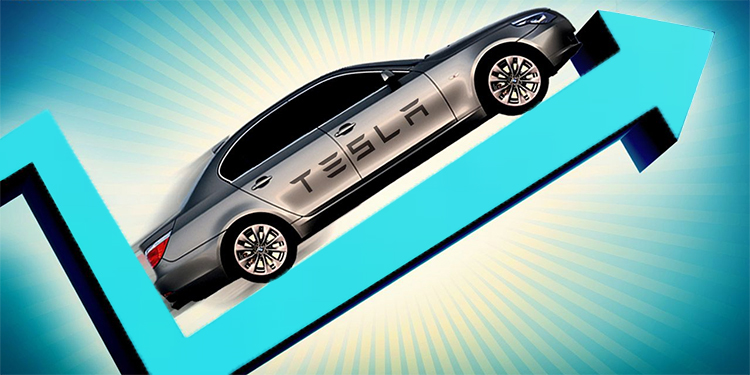Tesla (TSLA), the world-famous electric vehicle, robotics, AI, and energy storage company, is currently undergoing a strategy shift. It is shifting its focus from human-operated electric vehicles to autonomous taxis and humanoid robots. This is a big leap, however, Tesla’s CEO Elon Musk has a clear vision and direction and is committed to success, so I am bullish on TSLA stock for the long term despite its rich valuation and volatility risks that come with the investment.
Tesla’s Future Depends on Its FSD Technology
Tesla’s next big step, which should give it a clear edge over its competitors, is its Full Self-Driving (FSD). Currently, it is classified as ADAS ( Advanced Driver Assistance System) Level 2 automation, providing partial vehicle automation and requiring active driver supervision. That means that currently, the car is not fully autonomous because it cannot operate without human oversight. However, the medium-term goal is to develop the technology further to enable a fleet of autonomous taxis from Tesla. As stated above, I believe in Musk’s vision for the future and reaffirm my bullish position on TSLA stock and Tesla’s FSD’s future success.
I also appreciate the company’s long-term strategy, which includes implementing its autonomous taxi network. The company plans to leverage customer vehicles for a profit-sharing autonomous ride-hailing service, offering a revolutionary new business model that should be highly accretive to shareholders. This step could significantly increase its margins.
Additionally, Tesla’s autonomous humanoid robot, Optimus, could vastly decrease factory operating costs. I am bullish on Tesla for this long-term vision related to heavily automated manufacturing and transportation services. Furthermore, Musk has mentioned the transformative potential for Optimus across industries, not just internally at Tesla, so this could be another big revenue generator for the company.
Tesla’s China Pressures
One drawback to TSLA is the ongoing pressure it is facing from several automakers challenging its dominance in electric vehicles. Particularly in China, the famous BYD is rapidly expanding and offers competitively priced models. In fact, BYD has recently surpassed Tesla in global EV sales, including plug-in hybrids.
Indisputably, competitive pressure from Chinese EV makers has caused a decline in Tesla’s sales, necessitating price adjustments from management to boost demand. This has had a notable impact on the company’s margins. While its revenues have increased, its operating margins have decreased significantly, from 16% in Q4 2022 to 8.2% in Q4 2023.
Autonomous Taxis Could Face Opposition from Regulators
Another concern is that if Tesla wants to achieve its ambitious plans, it must navigate a complex regulatory environment to widely deploy its autonomous taxi service. The company must secure approvals from multiple regulatory bodies, which can be time-consuming and complex. On the other hand, Musk has proved himself as someone who isn’t intimidated by delays or obstacles along the way. Therefore, I still believe in the company’s success in overcoming these regulatory steps.
The road to regulatory approval could be long, because Tesla’s approach to autonomous transport involves cameras and neural networks, rather than the traditional method of LIDAR and sensors as used by companies like Waymo. While this is potentially more comprehensive once the functionalities have scaled, it is also controversial as the method is less tested. It does have the capability of vastly improving cost efficiencies for Tesla, but it will also likely take more time for full regulatory approval due to its novelty.
Furthermore, if Tesla cannot implement its autonomous taxi network quickly enough, investors may lose faith in management and begin to transfer their capital into other stocks. Amid such uncertainty regarding regulation and potential delays, it is not unlikely that Tesla stock will face further selling action in the short-term to medium-term. As a result, I think long-term Tesla bulls need to be very patient.
TSLA’s Rich Valuation
Even if I consider TSLA stock a Buy (emphasis on the long haul), one cannot ignore its rich valuation with a forward PE ratio of over 94. This is somewhat concerning as it indicates high volatility risk if the company does not meet future expectations related to autonomy. To compare it, Nvidia (NVDA) has a forward PE ratio of nearly 50, and Microsoft (MSFT) has a much lower forward PE ratio of nearly 32.
Despite this, Tesla could continue to climb in price if its valuation multiples don’t collapse. Wall Street estimates, on consensus, that Tesla could achieve normalized EPS growth of nearly 40% and revenue growth of 16.5% in its Fiscal period ending December 2025. For comparison, the highly valued Nvidia also has an estimated 40% normalized EPS growth rate and a much higher revenue growth rate than Tesla of nearly 39% for its Fiscal period ending January 2026.
So, Tesla is potentially overvalued. However, it also needs to be considered that Tesla is valued as a one-of-a-kind company. I believe its valuation multiples are higher based on sentiment surrounding Elon Musk’s celebrity status, media appearances, and business growth rates. Therefore, the high valuation multiples can be sustained if autonomous taxis succeed.
What Does Wall Street Say?
Turning to Wall Street, the average analyst price target for TSLA stock is $211.50, indicating around a 4% downside potential over the next 12 months based on 10 Buy ratings, 14 Hold ratings, and seven Sell ratings. This short-term estimate does seem reasonable to me, especially as the company is going through quite a volatile period of operational shifts. However, I believe Tesla stock could generate high alpha over five years or more if bought now, meaning it will outperform the market.

Conclusion
This is both an exciting time for Tesla and a potentially daunting time for its shareholders. I am a Tesla bull, and I think the stock could grow significantly and maintain high valuation multiples once the company is operational in the autonomous taxi field. However, I do not expect this to be a linear path to growth in the short-to-medium term. Many regulatory hurdles, transition costs, and strategy adjustments are required for success.
















